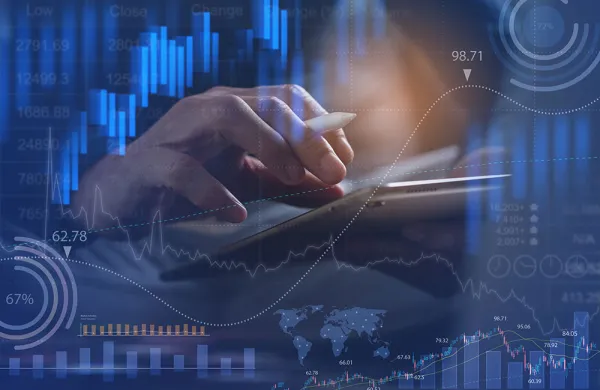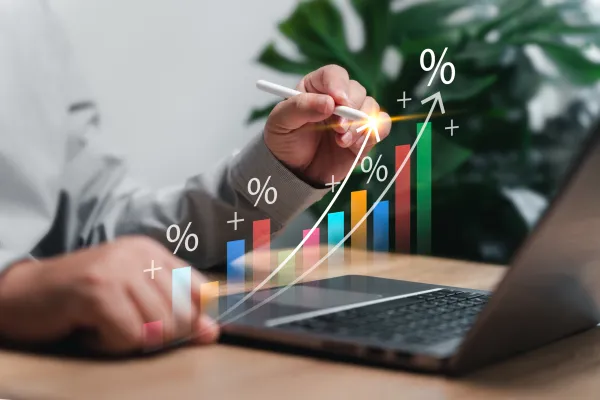It’s over. The digital revolution has finally claimed victory over a print magazine I love and have loved for a long time — specifically, the one you are now reading.
After 50 years, the print version of Institutional Investor is being retired. Sigh. I’d love to pretend this doesn’t upset me, but it does. I’ve read this magazine since college, and it’s been an honor to be featured in its pages. I will miss it and the era it captured. I will also miss the dialogue it inspired with my loyal readers; the tens upon tens of you who managed to flip this far back every month. (Thank you.)
Yet it’s been ages since I actually read the print magazine.
The only reason I still get it delivered is to thrust my column between my kids’ eyeballs and their iPads in the hope of eliciting smiles. Honestly, losing the print version won’t hurt me as a reader; I read everything on a gigantic phone. But as a writer, I know it means my cocktail party repertoire will never again include me conspicuously flipping through a copy of the magazine for which I am a bona fide columnist.
In all sincerity, this change — off-line to online — will undoubtedly create uncertainty for the magazine, its readers, and even me. Will the quality be as good? Will the articles reach the same number of people? Will readers, and thus editors, want me to keep writing? Will I want to?
That we don’t yet have clear answers to these questions is not surprising. Digital revolutions specialize in this sort of uncertainty. They threaten conventional assets. The unleashing of artificial intelligence, the internet of things, and big data is progressively and exponentially transforming everything around us. Even the most hardened digital native will find the coming transition disorienting.
Imagine, as did the leadership at Institutional Investor, that you’re an investor trying to figure out what to do with your portfolio in this new digital world. Do you hold onto your existing assets and hope for the best? Or do you take the leap into the new world? Would you invest in a new parking garage today, just as driverless cars are coming online? Would you invest in a toll road based on traffic models from the era before drones and smart traffic apps? Will rental car companies go the way of travel agents? Investors today are faced with countless examples where technological change threatens the future value of conventional assets.
But it cuts both ways. Technology and the digitization of everything may create uncertainty, but it will also reduce uncertainty. At the Stanford Global Projects Center, we have two big research projects going on: one is on digital cities, the other on digital investors. What we’ve learned is that whether it’s media, personal mobility, infrastructure, retail, or anything else in the real economy, digitization creates uncertainty about existing portfolios of assets. But it also offers new tools for understanding and maximizing the value of those same assets.
Today investors are already using digital signals from trains, roads, and buildings to improve their traffic predictions (and lower the risk to greenfield investing). New forms of data are helping investors understand and predict political risk. Onsite data feeds are informing investors if a construction project is on track. Satellites and drones are providing data to investors, and we then augment that data with scraped content from the web (e.g., reviews and ratings, social media posts). Investors are collecting microdata on consumer behavior, while audio, video, images, and other data formats are being processed and catalogued.
All of this data — what some have taken to calling alt-data — can allow deeper, more real-time understanding of economic structures and change. Technologically smart investors will be able to ingest the data coming out of their cities and use it to understand assets in new ways to make better decisions — with less uncertainty. That’s the future. But it isn’t possible without the digitization of everything.
In sum, the solution to the disruption, dislocation, and uncertainty stemming from the technological revolution could be, paradoxically, more technology. The longer we try to hold onto the past — in terms of our thinking, our processes, and our legacy technologies — the more uncertain the world will become. However, if we match our own technological revolution to the one happening around us, we might actually end up as better investors.
As for the print magazine, it offered writers like me a dream — a story, if you will. It went out to more than 100,000 subscribers. How many of those people actually read my articles was, however, uncertain. With only online metrics to consider from now on, however, the editors will know — with precise certainty — exactly how many people read (and finished) my column, which jokes bombed, and which stories charmed. My column will become another corner of the data-driven world.
Here I thought I was worried about the uncertainty of this big move to online only. Perhaps what I’m really worried about is the coming precision and objectivity of it all. Maybe I’m uncertain about the looming certainty that inevitably comes after digitization.






